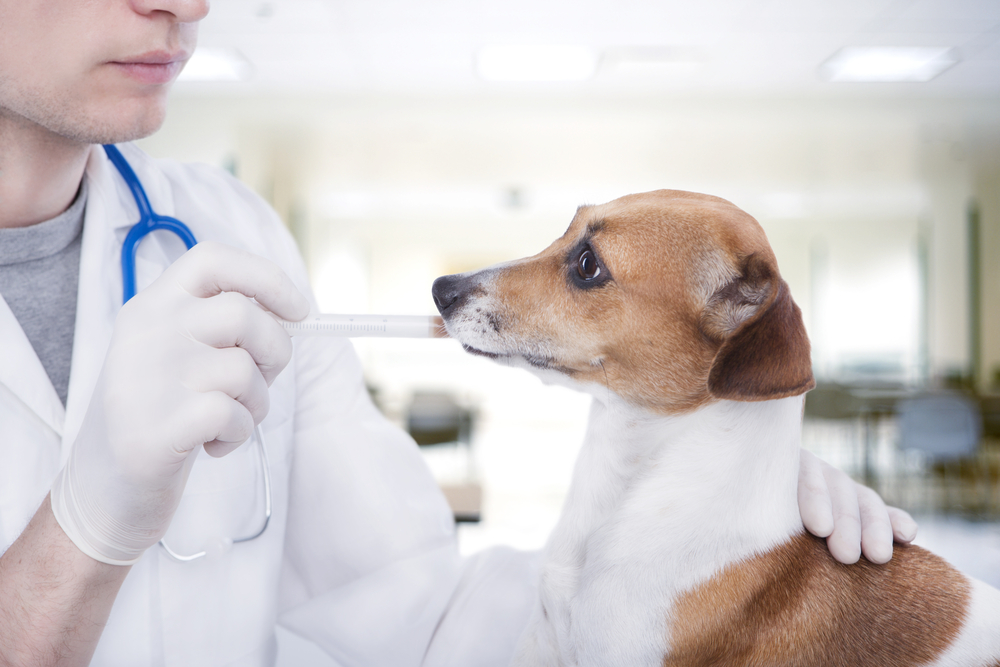Your pet will likely need medication at some point—for an infection, chronic illness, pain such as arthritis, or to prevent parasites. Medicating your pet can be daunting, but with the right approach and lots of patience, your pet can learn to accept the regimen. Our Krichel Animal Hospital team offers simple steps to ensure your pet takes their medication without a struggle or being stressed.
Follow pet medication instructions
Our veterinary team will provide detailed instructions on dosage, frequency, timing, and storage of your pet’s medications, and explain the best way to administer the drug. For example, if your furry pal resists pills and capsules, we may have other options, such as a liquid form. We will always try to find a solution for your pet, so do not hesitate to ask questions or mention your concerns before you leave your appointment.
Minimize stress in your pet
Rather than engaging in a wrestling match as you try to force medication, change your tactics. The more frustrated or stressed you are, the more your pet will be, because they have a sixth sense for gauging your emotional state. Try walking or playing with them before medication time.
Create positive associations for your pet
Positive reinforcement, such as treats and snuggles, is the most successful training technique. Follow every medication event with a treat, verbal praise, or fun activity, and gradually your pet will form an association with these rewards and happily accept their medication.
How to administer different forms of pet medication
When you’re calm and collected, learn the different techniques for the different medication forms. They include:
- Pills or capsules — If your pet’s medication is capsules or tablets, you can make administration easier by hiding the pill in a treat or a pill pocket. You can also crush and mix the pill with a small amount of wet pet food but always seek our veterinarian’s guidance first to ensure the medication can be crushed.
You can also conceal the pill in a favorite, pet-safe food, such as:
-
- Peanut butter, with no xylitol
- Mashed sweet potato
- Sliced cheese
- Deli meat, such as turkey or ham
- Pumpkin puree
- Liquid medication — Administering liquid medication requires a syringe or dropper, which helps ensure your pet receives the precise dosage. Hold your pet gently but securely, carefully insert the filled syringe or dropper in the side of their mouth, toward the back, and between the teeth and gums, to prevent them from spitting the medication out.
- Topical treatments — Topical medications, such as creams, sprays, or ointments, are applied directly to the skin or affected area. Follow our veterinarian’s instructions regarding application frequency and dosage. Ensure you use disposable gloves to avoid skin contact while applying the medication. Monitor your furry pal to ensure they do not try to lick off the medication and that the drug is fully absorbed. You may need to consider an Elizabethan collar if they will not leave the area alone.
Monitor your pet for side effects

After administering medication, watch your pet for signs of improvement or adverse or allergic reactions that may present as:
- Skin redness
- Swelling
- Hives
- Vomiting
- Diarrhea
- Lethargy
- Drooling
- Disorientation
- Seizure
- Anaphylaxis (i.e., a severe, life-threatening allergic reaction)
Contact our veterinary team immediately if you see any of these signs.
Medicating your pet doesn’t need to be stressful, for you or your pet. By following our simple steps and working closely with our veterinary team, you can ensure your pet stays healthy and happy. Give our Krichel Animal Hospital team a call if you need assistance medicating your pet.







Leave A Comment